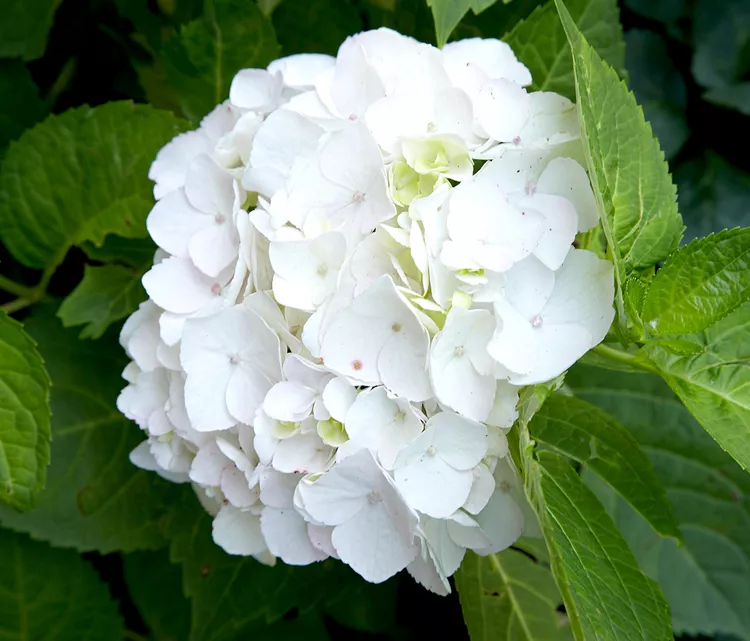A hydrangea in full bloom is a colorful sight to celebrate. But did you know that some types of hydrangeas actually produce their flower buds during the growing season before blooming? The young, tender buds form in late summer and then need to hang on through whatever winter weather comes their way. If cold winds, subzero temperatures, and freeze-and-thaw cycles damage those buds, chances are you won't see any hydrangea flowers the following spring or summer. Extra care for your hydrangeas in winter in colder regions will help maximize their blooms. Here's what you can do to prepare your hydrangeas for the cold so you'll be sure to enjoy their beautiful flowers once again.
1. Know your hydrangea type.
The first step in planning winter care is to get a good idea of what kind of hydrangea you are growing. If your hydrangea doesn't bloom in spring but instead blooms exclusively in mid to late summer, it's likely a smooth or panicle hydrangea. These varieties produce flower buds in spring. Because smooth and panicle hydrangeas develop flower buds and bloom in the same growing season, they rarely require extra winter care.
Hydrangeas that bloom in spring and early summer are likely bigleaf or oakleaf hydrangeas. These hydrangeas bloom from flower buds created the previous summer or fall (a few varieties, such as Endless Summer hydrangeas, also form buds the same year as they bloom). If extreme cold or drying winter winds are a challenge in your region, consider adding some winter protection around these spring and summer-blooming shrubs. If you live in a milder climate and haven't had trouble with your bigleaf or oakleaf hydrangea blooming in the past, you probably don't need to protect your plant.
2. Protect spring and early summer hydrangeas.
Flower-bud protection is the goal of caring for hydrangeas in winter. The simplest method is to mound shredded leaves or bark mulch around the base of the plant to about 12 inches or so. Put the mulch mound in place in late fall after the ground freezes, and uncover plants in spring when temperatures begin to stay above freezing.
3. Water plants well.
Like all trees, shrubs, and perennials, Hydrangeas overwinter best when they are fully hydrated. Water hydrangeas deeply a couple of times in fall. Winter winds can quickly dry out hydrangeas. Ample moisture in fall will help stems withstand freezing blasts of air.
4. No need to prune.
If you trim your plants in fall or winter, you may mistakenly remove flower buds for the following year on bigleaf and oakleaf hydrangeas. Leaving the old flower heads on the plants will also add some interest to the winter landscape. It's best to save hydrangea pruning chores until spring or summer after plants bloom (don't worry, the new growth will soon hide any dead stems from the following year).
5. Bring potted hydrangeas inside.
Potted hydrangeas overwinter best in a garage or basement where the temperature stays cool but doesn't freeze. The plants will go dormant, but you'll still need to water the pots occasionally, about once a month, to keep the roots moist, until spring.




















